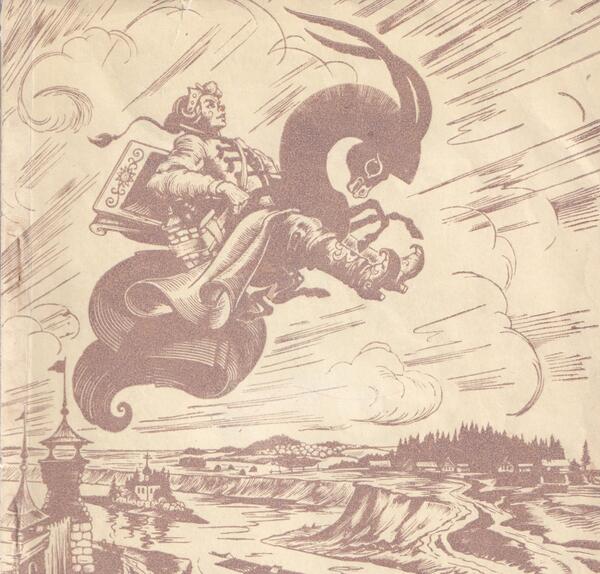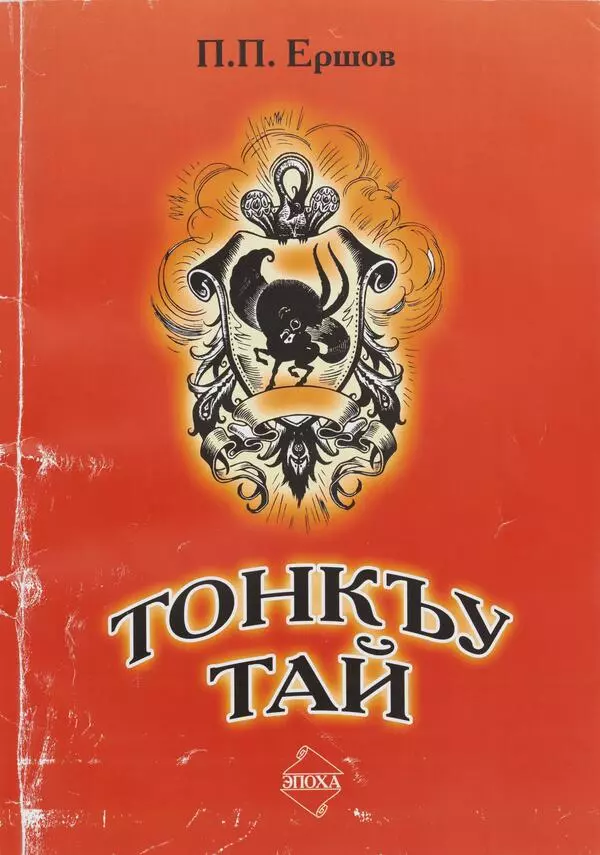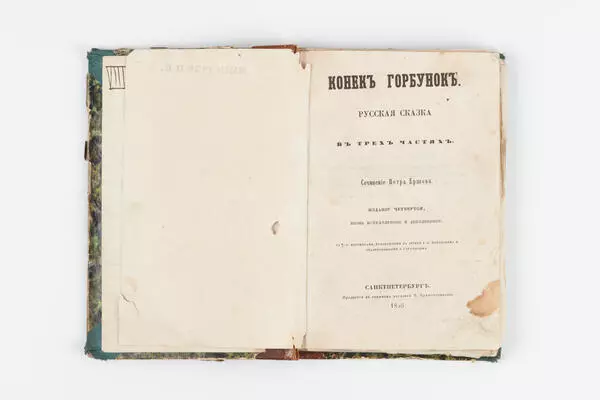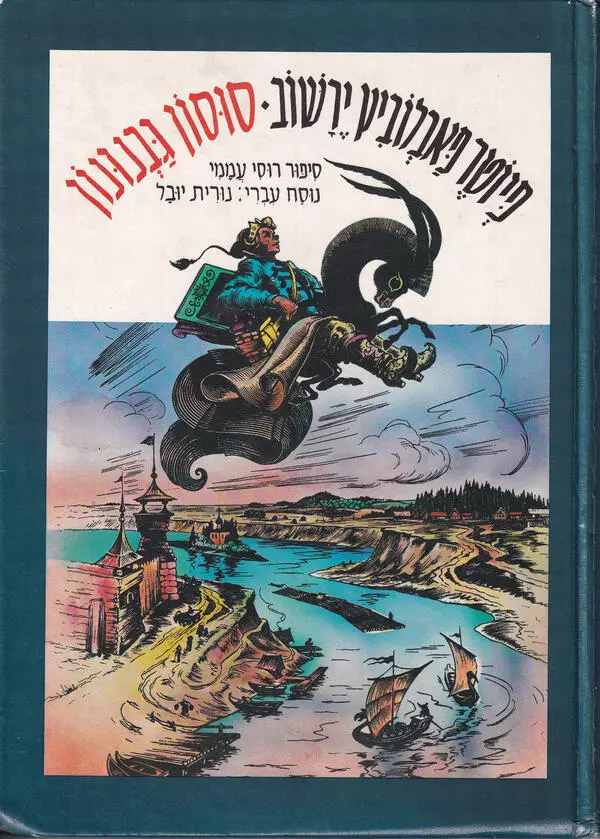Pyotr Yershov, a Russian poet and novelist, became famous for his fairy tale ‘The Little Humpbacked Horse’, which he wrote as a student. A small excerpt from the tale was first published in the third volume of the ‘The Reader’s Library’ magazine in 1834. That same year, Yershov’s tale was published as a separate edition and was republished seven times during his lifetime. Prior to the fourth reprint, in 1856, Yershov reworked the text extensively, and this is the version that is known today. Back then, in 1856, Yershov wrote to his friends:
The Little Humpbacked Horse
Creation period
1983
Dimensions
21,5x16,6 cm
Technique
typographic printing, paper
Collection
0
Open in app#1
Pyotr Yershov
The Little Humpbacked Horse
#8
#10
My horse is once again galloping across the Russian Tsardom. Godspeed to him! The Cerberuses from literary journals are still silent… But the horse himself is not that simple.
#11
The Yershov Museum Complex of Ishim City houses a collection of foreign-language editions of ‘The Little Humpbacked Horse’. The tale was translated into all European languages: Armenian, Japanese, Hebrew, and the native languages of the peoples of Russia.
Poet Shamil Kaziev translated Yershov’s tale “The Little Humpbacked Horse” into Tabasaran in 1983.
Kaziev was born on April 1, 1944, in the village of Gumi, Tabasaran district. The future poet mastered Russian earlier than his peers. In fourth grade, he read Yershov’s fairy tale in Russian by himself. Later, Kaziev graduated from the Philological Department of the Dagestan State University named after V. I. Lenin, and studied at the Gorky Literary Institute. After his studies, he worked as a teacher at the Guminsky Secondary School and as an editor at the Dagestan book publishing house.
Kaziev wrote and published many books for children: ‘Light Drops’, ‘The Hare’s Path’, 'Why the Fox Cackled' and 'Kintsamehmer'. Later, the poet told why he decided to translate the Yershov’s tale. The Tabasarans taught their children Russian at the age of 14-15 when they were no longer interested in fairy tales. And he wanted children from an early age to be able to learn the magical story of the peasant who went in search of the Firebird.
The Tabasarans are an indigenous people of southern Dagestan. From 1928 they used a Latin-based alphabet for writing, and from 1938 they switched to Cyrillic. Tabasaran is listed in the Guinness Book of Records as one of the world’s most difficult languages. For example, it has the largest case system of up to 52 cases for nouns, adjectives, and numerals. And the verb has the following grammatical categories: person, number, tense, mood, mode of action, and grammatical class (which under the 1979 rules was allowed to be omitted). Today Tabasaran is spoken by slightly more than 100 000 people.
Poet Shamil Kaziev translated Yershov’s tale “The Little Humpbacked Horse” into Tabasaran in 1983.
Kaziev was born on April 1, 1944, in the village of Gumi, Tabasaran district. The future poet mastered Russian earlier than his peers. In fourth grade, he read Yershov’s fairy tale in Russian by himself. Later, Kaziev graduated from the Philological Department of the Dagestan State University named after V. I. Lenin, and studied at the Gorky Literary Institute. After his studies, he worked as a teacher at the Guminsky Secondary School and as an editor at the Dagestan book publishing house.
Kaziev wrote and published many books for children: ‘Light Drops’, ‘The Hare’s Path’, 'Why the Fox Cackled' and 'Kintsamehmer'. Later, the poet told why he decided to translate the Yershov’s tale. The Tabasarans taught their children Russian at the age of 14-15 when they were no longer interested in fairy tales. And he wanted children from an early age to be able to learn the magical story of the peasant who went in search of the Firebird.
The Tabasarans are an indigenous people of southern Dagestan. From 1928 they used a Latin-based alphabet for writing, and from 1938 they switched to Cyrillic. Tabasaran is listed in the Guinness Book of Records as one of the world’s most difficult languages. For example, it has the largest case system of up to 52 cases for nouns, adjectives, and numerals. And the verb has the following grammatical categories: person, number, tense, mood, mode of action, and grammatical class (which under the 1979 rules was allowed to be omitted). Today Tabasaran is spoken by slightly more than 100 000 people.
#9
Ministry of Culture of the Russian Federation
read morehide
00:00
00:00
1x
The Little Humpbacked Horse
Creation period
1983
Dimensions
21,5x16,6 cm
Technique
typographic printing, paper
Collection
0
Open in app
Share






